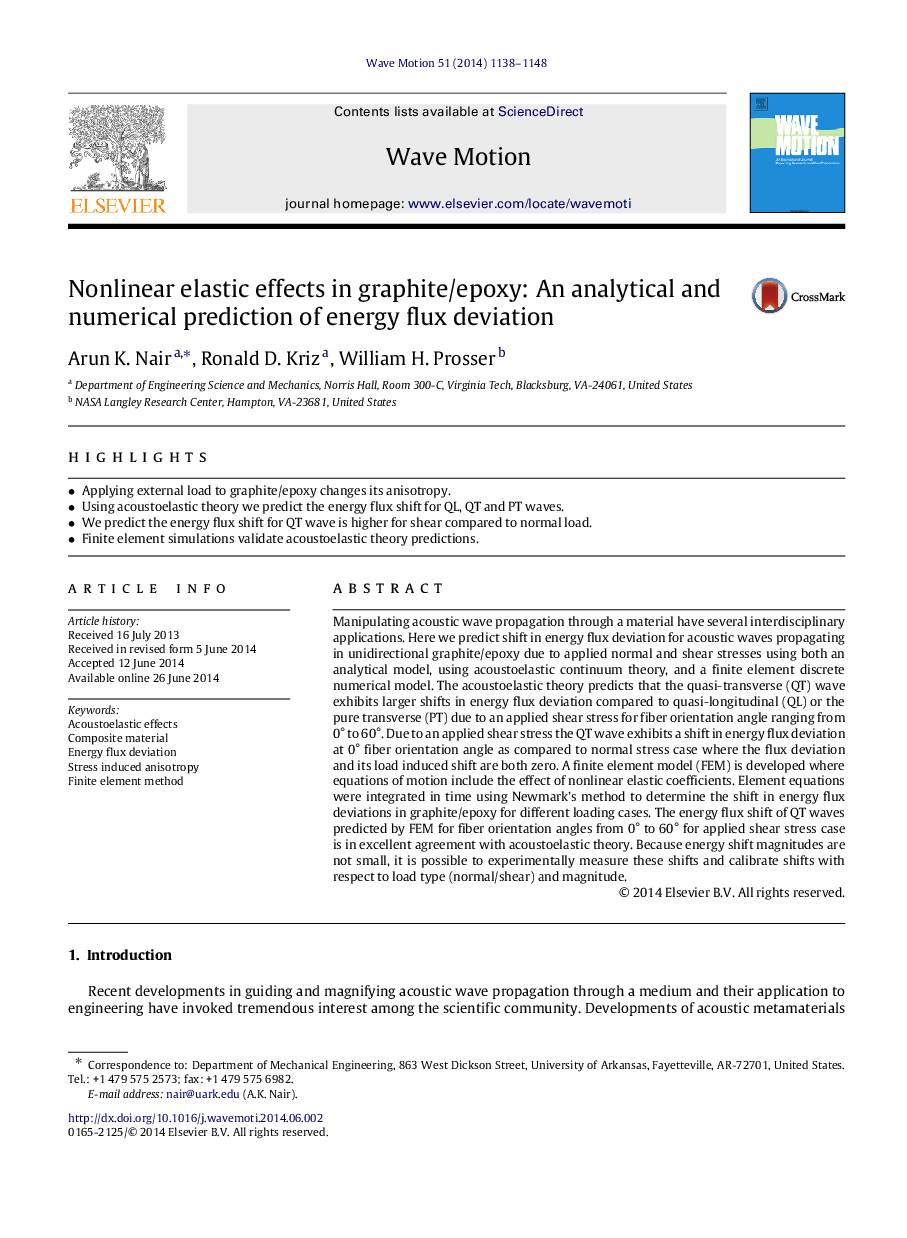| کد مقاله | کد نشریه | سال انتشار | مقاله انگلیسی | نسخه تمام متن |
|---|---|---|---|---|
| 1900123 | 1045266 | 2014 | 11 صفحه PDF | دانلود رایگان |
• Applying external load to graphite/epoxy changes its anisotropy.
• Using acoustoelastic theory we predict the energy flux shift for QL, QT and PT waves.
• We predict the energy flux shift for QT wave is higher for shear compared to normal load.
• Finite element simulations validate acoustoelastic theory predictions.
Manipulating acoustic wave propagation through a material have several interdisciplinary applications. Here we predict shift in energy flux deviation for acoustic waves propagating in unidirectional graphite/epoxy due to applied normal and shear stresses using both an analytical model, using acoustoelastic continuum theory, and a finite element discrete numerical model. The acoustoelastic theory predicts that the quasi-transverse (QT) wave exhibits larger shifts in energy flux deviation compared to quasi-longitudinal (QL) or the pure transverse (PT) due to an applied shear stress for fiber orientation angle ranging from 0° to 60°. Due to an applied shear stress the QT wave exhibits a shift in energy flux deviation at 0° fiber orientation angle as compared to normal stress case where the flux deviation and its load induced shift are both zero. A finite element model (FEM) is developed where equations of motion include the effect of nonlinear elastic coefficients. Element equations were integrated in time using Newmark’s method to determine the shift in energy flux deviations in graphite/epoxy for different loading cases. The energy flux shift of QT waves predicted by FEM for fiber orientation angles from 0° to 60° for applied shear stress case is in excellent agreement with acoustoelastic theory. Because energy shift magnitudes are not small, it is possible to experimentally measure these shifts and calibrate shifts with respect to load type (normal/shear) and magnitude.
Journal: Wave Motion - Volume 51, Issue 7, November 2014, Pages 1138–1148
